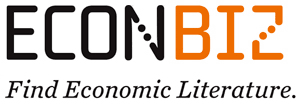Analysis Of Risk Management Strategies In The Dairy Industry Using Monte Carlo Simulation Techniques
Market prices for both milk and feed commodities exhibit increasing volatility in recent years thus creating additional uncertainty in the management of dairy farms. This uncertainty translates to financial and business risk for the dairy manager as the ability to accurately budget future investments and to meet debt obligations is hindered by rapidly changing commodity prices. Three years of data from the Dairy Farm Business Summary, conducted annually by Cornell University, was used to develop financial statements for a 1,000 cow dairy. Historical commodity futures and options data, gathered by the University of Wisconsin, was used to develop price distributions and volatility estimates for milk, corn, and soybean meal. Combinations of risk management tools such as futures contracts and options were then analyzed against various price paths to primarily determine their relative efficacies in reducing the variance in annual net farm income. These price paths were generated through Monte Carlo simulation techniques using the @Risk add-in for Microsoft Excel. Analysis of the risk management tools spanned three levels of leverage from 20% to 70% as well as three marketing environments which were defined by volatility parameter and level of hedging. Thus nine simulations were completed in order to test the robustness of the risk management tools against changes in market assumptions and farm type. Results of the model generally fall in line those predicted by hedging theories. Average net farm income was lower when using risk management tools when compared to the baseline of cash marketing strategies. However, the variance in net farm income was reduced by using risk management tools. The effectiveness of the risk management tools differed among the various simulations and also based on the measure of effectiveness being used. In general, the use of futures contracts resulted in the greatest reduction in net farm income variance while the use of options provided a floor to net farm income while at the same time allowing for upside potential. This work provides a unique structural approach to modeling the use of risk management tools by dairy managers. The structure presented in this thesis mimics the daily price changes faced by producers and thus closely resembles their decision environment. The generation of daily prices allows for a full estimation of hedging costs, which is one of the main contributions of this thesis. The structure of the model also contributes to the literature regarding risk management by recreating the flow of a basic marketing plan by allowing the decision maker to determine their price triggers, times, and levels at which hedging takes place. This structure will likely contribute to further research through its flexibility in price generating parameters and marketing plan decision points.
| Year of publication: |
2010-04-09
|
|---|---|
| Authors: | Neyhard, James |
Saved in:
freely available
Saved in favorites
Similar items by person
-
Analysis of Price Risk Management Strategies in Dairy Farming Using Whole-Farm Simulations
Neyhard, James, (2013)
-
Fruit Farm Business Summary: Lake Ontario Region, New York 2006
White, Gerald B., (2007)
-
Fruit Farm Business Summary, Lake Ontario Region New York, 2008
White, Gerald B., (2009)
- More ...
